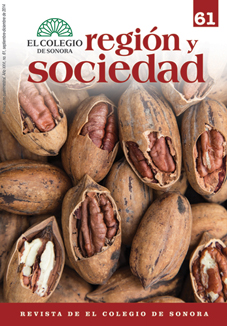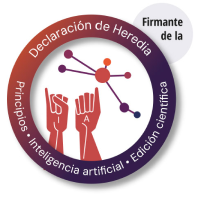Abstract
This article analyzes the complex relationship between poverty and vulnerability through disaster-specific vulnerability indexes for all Mexican states. The geographic distribution of vulnerability by disaster was mapped, and the main factors that caused it were identified. Taking the most relevant factors as guidelines, the existing public programs that address the mitigation of disaster-related damage and that strengthen the economic and social capabilities of the population were analyzed. Furthermore, suggestions were made to implement these programs jointly to benefit from their synergies in such a way as to address and reduce disaster-related damage and to strengthen economic and social capacity.References
Adger W., Neil. 1999. Social vulnerability to climate change and extremes in coastal Vietnam. World Development 27 (2): 249-269.
Benson, Charlotte, Edward J. Clay, Franklyn V. Michael y Alastair W Robertson. 2001. Dominican natural disasters and economic development in a small island state. Washington: World Bank.
Birkmann, Jörn. 2006. Measuring vulnerability to natural hazards: towards disaster resilient societies. Nueva York: United Nations University.
Bitran, Ricardo. 2001. Paying Health Providers through Capitation in Argentina, Nicaragua, and Thailand: Output, Spending, Organizational ïmpact, and Market Structure. Washington: Agency for International Development. Partners for Health Reform Project.
Blaikie, Piers, Terry Cannon, Ian Davis y Ben Wisner. 1994. At Risk: Natural Hazards, People's Vulnerability and Disasters. Londres: Routledge.
Brenkert, A. L., y E. L. Malone.2005. Modeling Vulnerability and Resilience to Climate Change: A Case Study of India and Indian States. Climatic Change 72: 57-102.
Briguglio, L. 2003. The Vulnerability Index and Small ïsland Developing States. A Review of Conceptual and Methodological ïssues. Paper prepared for the AIMS Regional Preparatory Meeting on the BPoA+10 Review, Praia, Cabo Verde.
Chambers, Robert. 1989. Vulnerability, Coping and Policy-introduction. ids Bulletin, Institute of Development Studies 20 (2): 1-7.
Charvériat, Céline. 2000. Natural Disasters in Latin America and the Caribbean: An Overview of Risk. Washington: Inter-American Development Bank.
CONEVAL. 2008. Pobreza por entidad federativa. México: CONEVAL.
Cutter, Susan, Bryan Boruffy, Lynn W Shirley. 2003. Social Vulnerability to Environmental Hazards. Social Science Quarterly 84 (2) : 242-261.
Dalenius, T., y J. L. Hodges.1959. Minimum Variance Stratification. Journal of the American Statistical Association 54: 88-101.
Deininger, Klaus y Lyn Squire. 1996. A New Dataset Measuring Income Inequality. World Bank Economic Review 10: 565—591.
Deressa, Temesgen, Rashid Hassan y Claudia Ringler. 2009. Assessing Household Vulnerability to Climate Change: The Case of Farmers in the Nile Basin of Ethiopia. Washington: International Food Policy Research Institute.
Eriksen, Siri, Richard Klein, Kirsten Ulsrud, Otto Noess Lars y Karen O'Brien. 2007. Climate Change Adaptation and Poverty Reduction: Key Interactions and Critical Measures. Noruega: Norwegian Agency for Development and Cooperation (Norad) y University of Oslo.
Ibarrarán, María Eugenia. 2010a. The Distribution of the Costs of Policy Inaction in OCDE Countries. Organization for Economic Cooperation and Development. París: Organización Europea para la Cooperación Económica, mimeo.
Ibarrarán, María Eugenia, Elizabeth Malone y Antoinette Brenkert. 2010b. Climate Change Vulnerability and Resilience: Current Status and Trends for Mexico. Environment, Development and Sustainability 12 (3): 365388. doi: 10.1007/s10668-009-9201-8.
Ibarrarán, María Eugenia, Miguel Reyes, Aniel Altamirano y María del Carmen Santillán. 2013. Adaptación al cambio climático como elemento de combate a la pobreza. Universidad Nacional Autónoma de México (UNAM)-PINCC, mimeo.
IG-INE. 2003. Sistema clasificatorio del relieve de México. México: Instituto de Geografía, UNAM, INE y SEMARNAT.
IPCC. 2007. Climate Change 2007-The Physical Science Basis.Working Group I Contribution to the Fourth Assessment Report of the IPCC. Cambridge: Cambridge University Press.
ISDR. 2009. Risk and Poverty in a Changing Climate: Global Assessment Report on Disaster Risk Reduction. Ginebra: Organización de las Naciones Unidas.
Jovel, R. 2000. El impacto socioeconómico de El Niño en Costa Rica durante 1997-1998. Coronado: Centro Agronómico Tropical de Investigación y Enseñanza, Programa de Naciones Unidas para el Medio Ambiente, Centro Nacional de Investigación Atmosférica, Organización Meteorológica Mundial y Década Internacional para la Reducción de los Desastres Naturales.
Kelly P., Mick y Neil W Adger. 2000. Theory and Practice in Assessing Vulnerability to Climate Change and Facilitating Adaptation. Climatic Change 47: 325-352.
López Calva, Luis, Cristina Rodríguez G., y Roberto Vélez. 2003. Estimación del idh estatal en México, análisis de sensibilidad a distintas decisiones metodológicas y comparaciones internacionales. Estudios sobre Desarrollo Humano, 2003-2, Programa de las Naciones Unidas para el Desarrollo-México.
Lustig, Nora. 2000. Crisis and the Poor: Socially Responsable Macroeconomics. Economia 1(1): 1-30.
Martine, George y José Miguel Guzmán. 2002. Population, Poverty, and Vulnerability: Mitigating the Effects of Natural Disasters. Environmental Change and Security Project Report 8: 45-68.
MFA. 2002. Fighting Poverty. Oslo: The Norwegian Ministry of Foreign Affairs.
Rayner, Steve y Elizabeth Malone. 2001. Climate Change, Poverty, and Intragenerational Equity: The National Level. International Journal of Global Environmental Issues 1(2): 175-202.
Reardon, Thomas y Edward Taylor. 1996. Agroclimatic Shock, Income Inequality, and Poverty: Evidence from Burkina Faso. World Development 24 (5): 901-914.
Scott, John. 2011. Gasto público y desarrollo humano en México: análisis de incidencia y equidad. Documento de trabajo para el informe sobre desarrollo humano México.
SAGARPA. 2012. Programas de apoyo de SAGARPA. México: SAGARPA.
SEDESOL. 2012. Programas sociales. México: SEDESOL.
SEGOB. 2012. fonden y Programa Municipio Seguro. México: SEGOB.
SEMARNAT. 2012. ProÁrbol. México: SEMARNAT.
Sistema de Inventario de Efectos de Desastres (DesInventar). 19802008. Declaratoria de desastres. México: Centro Nacional de Prevención de Desastres.
Skoufias, Emmanuel. 2003. Economic Crises and Natural Disasters: Coping Strategies and Policy Implications. World Development 32 (7): 1087-1 102.
Swift, Jeremy. 1989. Why are Rural People Vulnerable to Famine? IDS Bulletin 20 (2): 8-15.
Tol, Richard S. J., Thomas E. Downing, Onno J. Kuiky y J. B. Smith. 2004. Distributional Aspects of Climate Change Impacts. Global Environmental Change 14 (3): 259-272.
Wisner, Ben, Piers Blaikie, Terry Cannon e Ian Davids. 2004. At Risk: Natural Hazards, People's Vulnerability and Disasters. Nueva York: Routedge.
World Bank. 2010. World Development Report 2010: Development and Climate Change. Washington: World Bank.
Zapata, Ricardo. 2009. Economic Impact of Disasters: Evidence from dala Assessments by eclac in Latin American and the Caribbean. Santiago de Chile: Comisión Económica para América Latina y el Caribe.
Open access policy
The authors who publish in región y sociedad accept the following conditions:
In accordance with the copyright laws, región y sociedad recognizes and respects the authors’ moral rights, as well as the ownership of property rights, which will be transferred to the journal to disseminate the articles in open access. región y sociedad does not charge the authors for submitting and processing articles for publication.
All the texts published by región y sociedad —with no exception— are distributed under a Creative Commons license 4.0 Attribution – Noncommercial (CC BY-NC 4.0 International), which allows third parties to use the publication as long as they mention the works’ authorship and the first publication in this journal.
The authors can enter into independent and additional contractual agreements for the nonexclusive distribution of the version of the article published in región y sociedad (for instance include it into an institutional repository or publish it in a book) as long as they clearly indicate that the work was published for the first time in región y sociedad.
For all the above, the author(s) must send the Letter of transfer of property rights of the first publication duly filled in and signed by the author(s). This letter can be sent by e-mail as a PDF to: region@colson.edu.mx




















